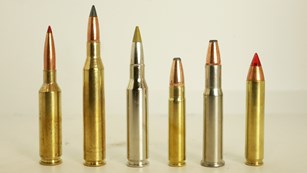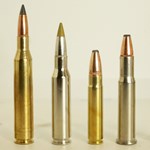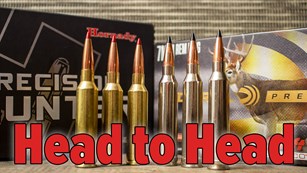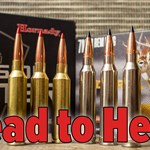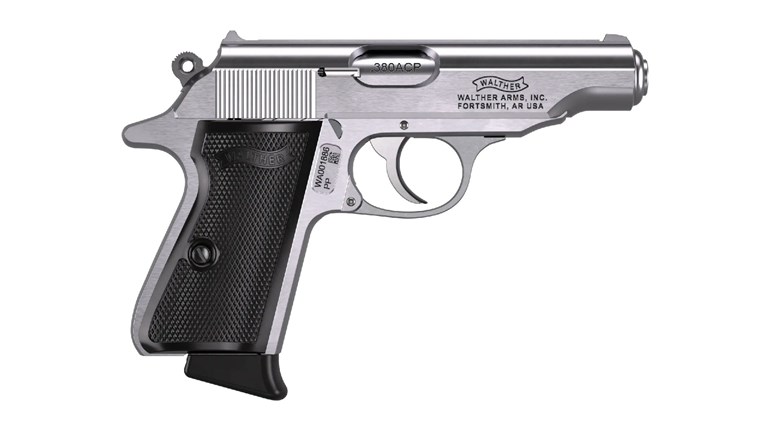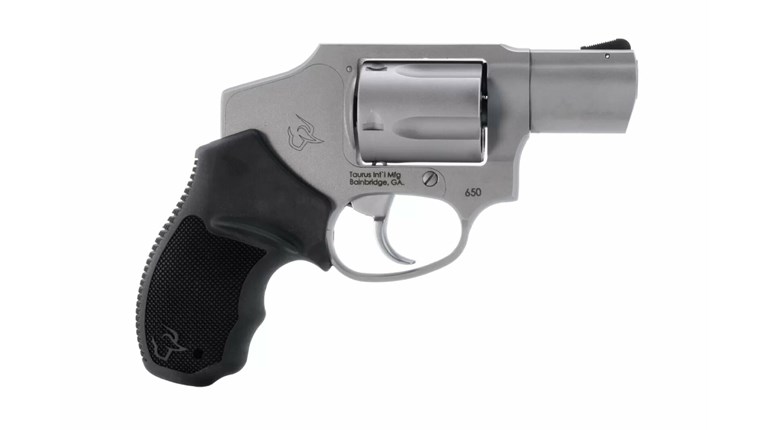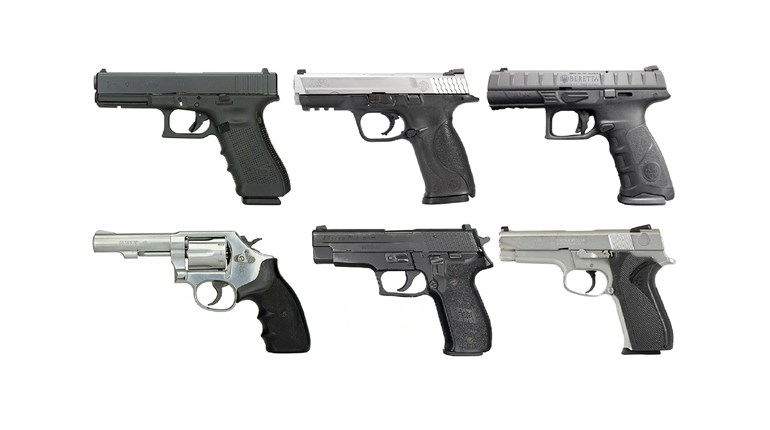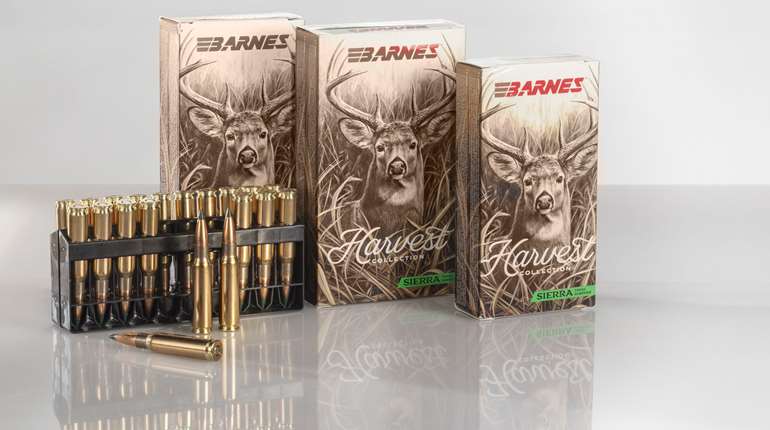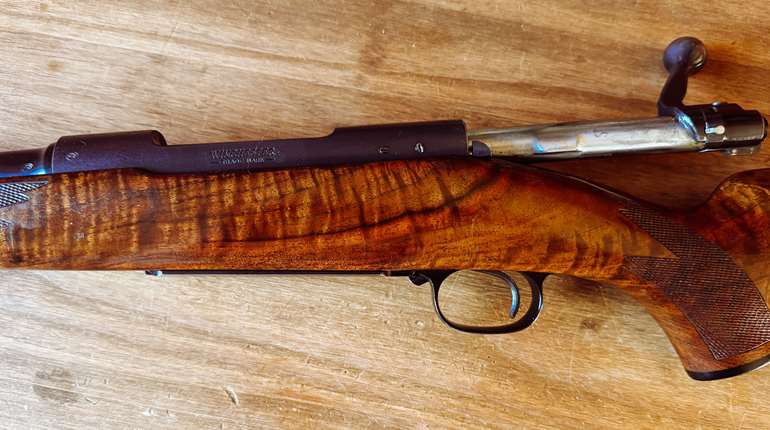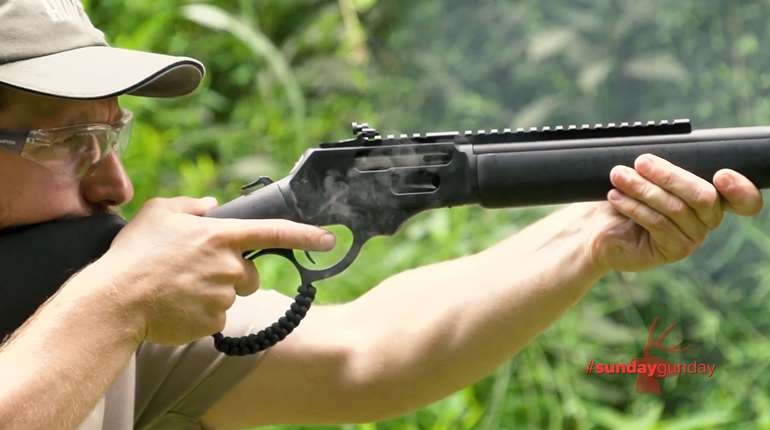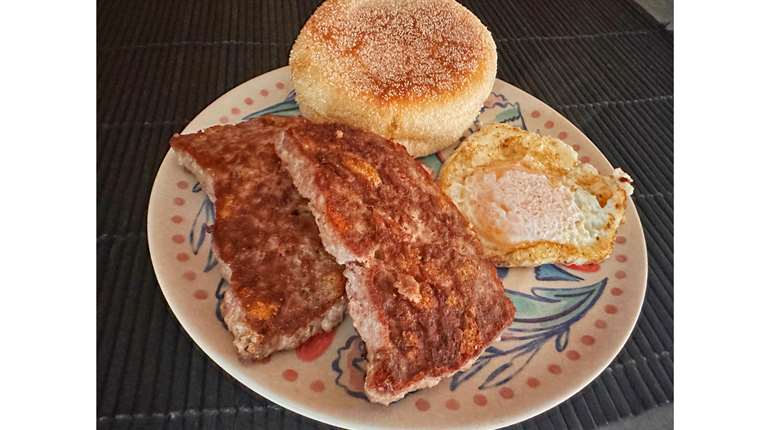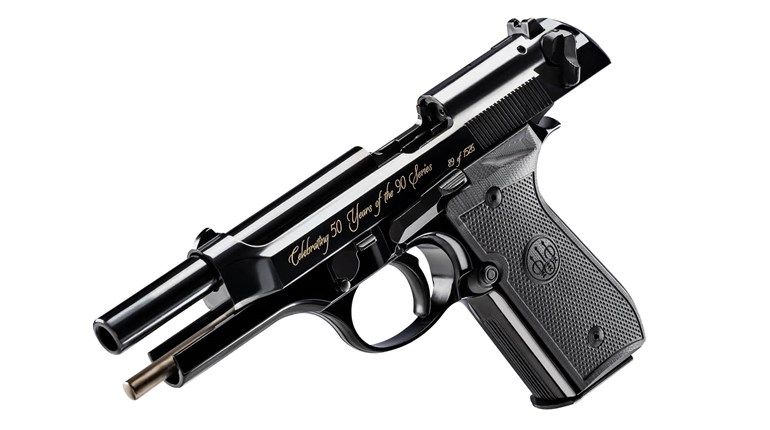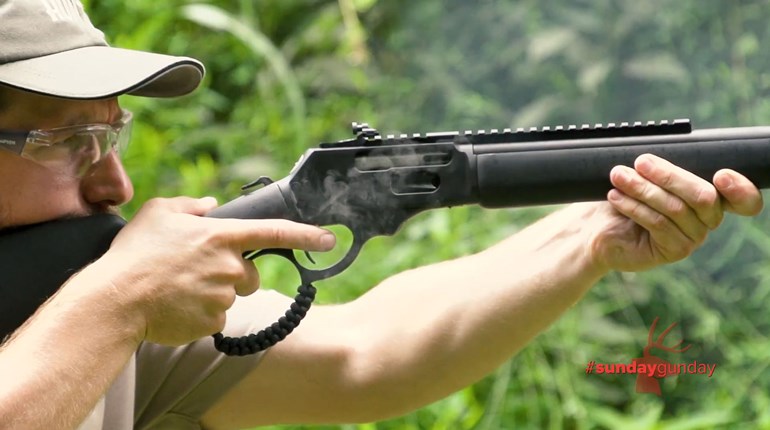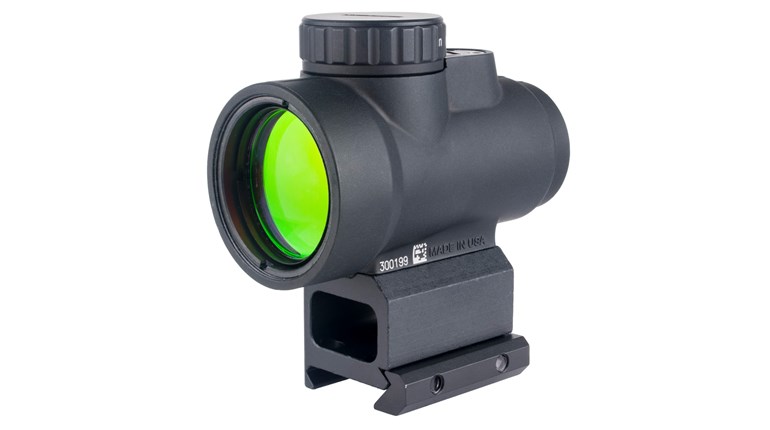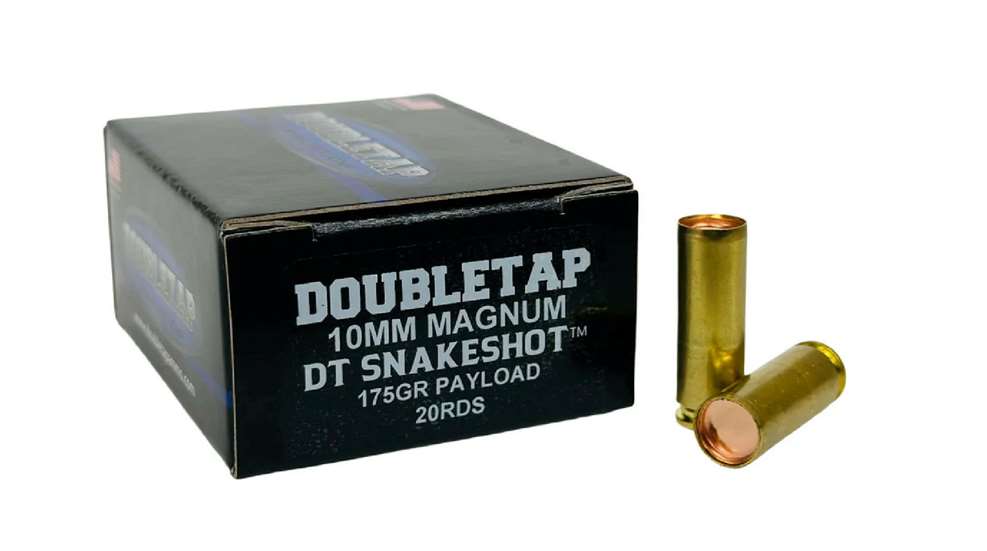
Last year, DoubleTap Ammunition's DT SnakeShot loads for revolvers represented the first new option for pistol-caliber pest control cartridges in quite some time. The loads they developed are sealed with a copper gas check instead of a polymer capsule, then filled with a charge of fine lead birdshot followed by a hard-cast lead disk, or wadcutter, instead of a polymer or paste board wad. The result is a pest control round that provides a reliable pellet spread with the wadcutter projectile delivering a hard, central hit. We tested most of the calibers available at that time (see those test results here) with positive results across the board.
New for 2025, DoubleTap has expanded the lineup to include the SnakeShot Defense series of semi-automatic pistol cartridges. The caliber options for these hybrid loads currently include 9mm, .45 ACP +P, 10mm Auto and 10mm Magnum. Once again, they've given their loads a unique twist to address the limitations of previous pest-control shell designs.
DoubleTaps's Hybrid Design for Reliable Cycling
Up until now, the most commonly available, factory-produced semi-automatic pistol shotshells have been CCI's pest control series. This company's cartridges feature a round-nose polymer capsule, in place of a bullet, filled with fine lead bird shot. The capsules are pressed into aluminum cartridge casings atop relatively low-power propellant charges. If the pressures produced by the expanding propellant gasses are too intense for the payload, the birdshot will form a doughnut-shaped pattern with a hole in the middle instead of the intended even spread.
 The payload of the DT SnakeShot revolver rounds consist of a copper gas check, lead birdshot and a hardcast lead solid.
The payload of the DT SnakeShot revolver rounds consist of a copper gas check, lead birdshot and a hardcast lead solid.
The CCI Pest Control rounds work nicely when fired from revolvers. For those enjoying the great outdoors, a revolver can be carried on the trail with a chamber or two loaded with pest control rounds followed by dangerous game or personal protection loads, depending on what the circumstances call for. If a venomous reptile or similarly troublesome pest crops up, it can be dealt with immediately. Should a threat of the four-legged or two-legged variety manifest itself, pull the revolver's trigger to cycle through the pest control rounds into the defensive loads. It's a simple and reliable arrangement.
However, the CCI offerings can be problematic for semi-automatic pistols. The lightweight polymer capsule and birdshot payload, along with the reduced-power powder charges, may not generate enough pressure to cycle the action reliably. This is by no means a secret since CCI says these rounds,"... may not function reliably in all models," right in their online cartridge listings.
 The new SnakeShot Defense semi-auto rounds are topped with jacketed hollow points followed by the lead birdshot.
The new SnakeShot Defense semi-auto rounds are topped with jacketed hollow points followed by the lead birdshot.
When I've tested these semi-automatic rounds in the past, I've done so by chambering the capsule-topped cartridge so that it is the first shot fired, followed by the remainder of the magazine's capacity filled with defensive hollow points. So far, I have yet to evaluate a pistol that did not fail to feed the next round in the magazine when the first round was a pest control shell. It just didn't push the slide back far enough to clear the next cartridge. This meant it was necessary to use the pistol as a single shot with an empty magazine or to plan to run a clearance drill to get the pistol back into action after the first pest control round was fired.
Doubletap's SnakeShot Defense solution for to the semi-automatic pistol shot shell resolves the feeding issues. The polymer capsule has been replaced with a controlled expansion jacketed hollow-point bullet. The bullet is followed by a charge of #9 lead birdshot sized for the given cartridge. Although they are not mentioned in the company's cartridge descriptions, some sort of wad (which punched extra holes in the test targets) is placed in between the birdshot and the propellant. The bullets used are fairly lightweight to compensate for the heavy-for-caliber combined payloads.
 DoubleTap says the bullets penetrate 10 to 12-inches in gel with reliable expansion.
DoubleTap says the bullets penetrate 10 to 12-inches in gel with reliable expansion.
These mixed payload cartridges are intended to serve as both pest-control and self-defense rounds at close distances. For a pest-sized issue, the spreading birshot pattern will dispatch it. If a more substantial threat should arise, the hollow points have demonstrated 10- to 12-inches of penetration in gel tests with reliable bullet expansion. And if additional shots are required, the pistol is going to cycle to the next round in the magazine.
Range Test Protocols
To evaluate the semi-automatic SnakeShot Defense loads, the same testing protocols were followed as those used for the DT SnakeShot revolver cartridges. In order to measure the central-hit accuracy of the hollow-point bullets, along with the spreading patterns formed by the #9 birdshot, five rounds of each caliber were fired into three separate 34-inch tall by 22-inch wide paper targets.
The targets were posted at distances of 2-, 5- and 7-yards with a Birchwood Casey Shoot-N-C 8-inch reactive bullseye affixed centrally to each target. These stick-on bullseyes are representative of pest-sized targets; they provided a repeatable aiming point for the bullet strikes and they make it easier to see and photograph the birdshot pellet strikes that pass through that 8-inch circle.
 The targets are 34-inch tall by 22-inch wide paper sheets with reactive 8-inch bullseyes affixed centrally.
The targets are 34-inch tall by 22-inch wide paper sheets with reactive 8-inch bullseyes affixed centrally.
As for payload velocities, DoubleTap lists the revolver rounds at 1000 fps. However, the company does not list the velocities for three of the four semi-automatic options. It can be tricky to get clean muzzle-velocity readings using sports-shooting chronographs. Multiple projectiles tend to confuse the computer.
Nevertheless, when I tested the revolver loads, I went ahead and set up a Garmin Xero C1 Pro chronograph just in case there was any data to be gleaned from the shooting sessions. With these cartridges, the 15-shot strings yielded at least seven or more clean readings, five of which were averaged together for the numbers shown in the results. However, with the semi-automatic loads, 15-shot strings produced between 13 to 15 usable readings for each caliber. This time around, I just went ahead and averaged the 13 to 15 results for a given caliber for the numbers shown below.
 The SnakeShot Defense loads produce devastating results at 2-yards.
The SnakeShot Defense loads produce devastating results at 2-yards.
In regard to the pistols used to fire the ammunition, duty-sized pistols with common barrel lengths between 4- and 5-inches were used. The exception being the 10mm Magnum load, which is configured as a revolver round.
It should be noted before proceeding that some of the paper targets will look like they were struck by more than five bullets, or that the bullets swerved away from the bulls eye. Those are actually wad strikes. The holes are slightly larger and have cleaner edges than those made by bullets.
9mm: 145-grain Payload
The 123-year-old 9mm pistol cartridge, also known as the 9mm Luger, 9mm NATO and 9x19mm Parabellum, is currently the preeminent choice for defensive handguns. It's now considered a top option for military, law enforcement and civilian applications. It is so popular that it's making its way out of urban and suburban settings and into the great outdoors. Since some folks are choosing to use 9mm pistols as trail guns, it's only logical that DoubleTap would develop a snake-shot load in this caliber.

The pistol used for testing was an affordably priced law enforcement officer (LEO) trade-in Glock Gen 4 G17 with a factory standard 4.49-inch barrel. Provided by AIM Surplus, this gently used gun was on sale, as of this writing, for just $319.95. LEO trade-ins like this one are ideal trail, trunk and utility guns because you get the useful features of a trusted brand at a fraction of the price of a new pistol.

This cartridge's 145-grain payload consists of a relatively light weight 95-grain jacketed hollow point followed by 100 pieces of #9 lead birdshot. The chronograph picked up 13 of the 15 shots fired for a bullet muzzle velocity average of 988 fps and 206 ft.-lbs. of energy. Here are the pattern results:
- 2 yards
- Birdshot Pattern: 17-inches
- Hollow Point Group: 0.98 inch ragged hole, measured side-to-side
- 5 yards
- Birdshot Pattern: top to bottom coverage
- Hollow Point Group: 2.45 inches
- 7 yards
- Birdshot Pattern: top to bottom coverage
- Hollow Point Group: 2.84 inches
10mm Auto: 205-grain Payload
The 10mm Auto could be called the outdoor pistol comeback king. This potent pistol round was developed by Jeff Cooper and others in the early 1980s, to then be commercialized by Dornaus & Dixon for the Bren Ten pistol in 1983. It was briefly adopted by the FBI after the Miami shootout in 1986, but proved to be too hot for law enforcement purposes. It went on to languish as a niche caliber for decades before becoming the popular semi-automatic pistol option for bear defense that it is today.

It's true that polymer pistols currently rule the trail gun roost. But I recently spent some time with a top notch all-steel, single-stack 1911 pistol, which proved to be a handy reduced recoil option, called the European American Armory (EAA) Girsan MC 1911 S10 Influencer X. You can read that review here. The 5-inch barrel was a good fit for this evaluation.

This round launches a 205-grain payload consisting of a 135-grain jacketed hollow point and 140 pieces of #9 lead birdshot. The chronograph read 13 of the 15 shots fired with this load, as well. The bullet muzzle velocity averaged 1023 fps for 314 ft.-lbs. of energy. This is how it patterned:
- 2 yards
- Birdshot Pattern: 12 inches
- Hollow Point Group: ragged holes from around 0.5 to 1.25 inches , measured side-to-side
- 5 yards
- Birdshot Pattern: top to bottom coverage
- Hollow Point Group: 1.59 inches
- 7 yards
- Birdshot Pattern: top to bottom coverage
- Hollow Point Group: 1.80 inches
.45 ACP +P: 245-grain Payload
Despite the 9mm cartridge's rise to prominence, John Moses Browning's rimless, straight-walled .45 Automatic Colt Pistol (ACP) cartridge is still going strong. Developed in 1904, and eventually selected to serve in the U.S. military's M1911 pistols, its storied history along with its continued sub-sonic utility keep it in action in military, law enforcement, competition and civilian self defense circles. This snake shot line up would not be complete without it.

The pistol used for the evaluation was another budget-priced, LEO trade-in provided by AIM Surplus. The early generation 4-inch barrel Smith & Wesson M&P 45, four used magazines, along with a kydex holster and dual magazine pouch, were available together for $367.70 (read the full review here). A used pistol like this one is a great fit for traversing the wilderness because when it acquires a ding, scratch, or more holster wear, it will blend in with the marks the pistol already has. This M&P is definitely a candidate for a recoil spring upgrade so that it can be carried stoked with DoubleTap's .450 SMC ammunition.

This snake shot round is topped with the heaviest payload of 245-grains with a 155-grain jacketed hollow point on top followed by 120 pieces of #9 lead birdshot. The chronograph read all 15 of the 15 shots fired. Despite the +P rating, this was the slowest load with a bullet muzzle velocity average of 788 fps for 255 ft.-lbs. of energy. It patterned like this:
- 2 yards
- Birdshot Pattern: 15 inches
- Hollow Point Group: 0.66-inch ragged hole, measured side-to-side
- 5 yards
- Birdshot Pattern: top to bottom coverage
- Hollow Point Group: 1.56 inches
- 7 yards
- Birdshot Pattern: top to bottom coverage
- Hollow Point Group: 1.83 inches
10mm Magnum: 175-Grain Payload; 1,000-fps. Listed 4-Inch Barrel Velocity
As discussed in this post, the 10mm Magnum is technically a non-rimmed, straight-walled cartridge designed specifically for semi-automatic pistols. However, the only handguns available to fire it these days are 10mm Auto single-action and double-action revolvers. Since this round is essentially a stretched out 10mm Auto, revolvers in this caliber can have their cylinders reamed out to accommodate the longer 10mm Magnum cartridge case.
For DoubleTap, it was a coin toss as to whether or not their 10mm Magnum snake-shot round could be configured as a revolver-style DT SnakeShot load, topped with a copper gas check and charged with birdshot and a hard-cast lead solid, or, like the semi-automatic SnakeShot Defense loads with the hollow point bullet and birdshot. They opted for the revolver configuration.

The revolver used for the evaluation has found its way onto my favored wheel gun list. It's a custom Magnum Research BFR sporting a 6.5-inch threaded barrel, optics rail and three factory-installed cylinders chambered in .40 S&W, 10mm Auto and 10mm Magnum. Any reason to break out this smooth handling single-action for a shooting session is a good one.

This cartridge's 175-grain payload includes 240 pieces of #9 lead birdshot followed by a 55-grain hard cast lead solid. It has a listed velocity of 1000 fps for 122 ft.-lbs. of muzzle energy for the lead solid when fired from a 4-inch barrel revolver. When fired from the 6.5-inch BFR, the chronograph picked up 12- of the 15-rounds fired for an average muzzle velocity of 1006 fps with 124 ft.-lbs. of solid projectile energy. The patterns are as follows:
- 2 yards
- Birdshot Pattern: 11 inches
- Lead Solids Group: 1.25 inches
- 5 yards
- Birdshot Pattern: top to bottom coverage
- Lead Solids Group: 2.01 inches
- 7 yards
- Birdshot Pattern: top to bottom coverage
- Lead Solids Group: 2.92 inches
Wrapping up
Let's summarize by starting with the 10mm Magnum cartridge results. How did it perform compared to the six revolver calibers we tested last year? In short, it demonstrated a comparable optimal birdshot pattern zone of between 2 to 5 yards. However, the lead disk groups were notably better than some of the other calibers with a 7-yard grouping under 3 inches. Considering how accurate the BFR can be, I'm not surprised.
Now for the new SnakeShot Defense semi-automatic rounds. The 9mm and .45 ACP loads fed, fired and ejected without a hitch throughout the course of testing. The 10mm Auto failed to feed within the first three rounds fired. After that it was smooth sailing.
Filled with the same #9 lead birdshot as the revolver rounds, and with similar pellet counts, I was expecting the same kind of pattern progressions. The revolver calibers exhibited dense central patterns at 2 yards, more dispersed but measurable patterns at 5 yards followed by 7 yard targets exhibiting top-to-bottom pellet marks with relatively few pellet strikes landing on the 8 inch reactive bullseyes at the center of the paper target.
--- A Garmin Xero C1 Pro chronograph was on hand to measure hollow-point bullet velocities.
A Garmin Xero C1 Pro chronograph was on hand to measure hollow-point bullet velocities.
However, the semi-automatic cartridges' birdshot spread more quickly. At 2 yards, the patterns were averaging 13.5 inches compared to the revolver average of 8.5 inches. At 5 yards, the pellet spreads were covering the paper targets from top to bottom while the revolver loads averaged pattern sizes of 19 inches. At 7 yards, the patterns of both the semi-auto and revolver loads have dispersed to the point that only a few lead pellets land on the intended 8 inch bullseye. Like the revolver loads, the semi-automatic loads yield optimal patterns at distances of 2 to 5 yards.
This brings us to the SnakeShot Defense's bullet accuracy potential. Across the board, the hard-cast lead disks of the revolver loads demonstrated an optimal accuracy potential of around 5 yards. The jacketed hollow points of the defense loads are heavier, longer and leave the barrel of the pistol ahead of the birdshot. This should mean that, in theory, the semi-automatic bullets should be more accurate than the revolver cartridges' lead disks. This proved to be the case.
The .45 ACP +P and 10mm Auto loads produced satisfying ragged central holes at 2 yards followed by five shot groups under 1.85 inches at 7 yards. Based on past experience, this would indicate acceptable defensive accuracy potential of 3- to 3.5-inch groups out to 15 yards and possibly to 25 yards. The 9mm cartridge's fairly light 95-grain bullet's group sizes opened up to 2.84 inches at 7 yards. This would indicate that groups are likely to reach or surpass the 3.5-inch group size maximum at 15 yards, which is still a 10 yard gain over the revolver disks.
As for bullet energy, the 9mm weighed in at 206 ft.-lbs., the 10mm Auto at 314 ft.-lbs. and the .45 ACP 255 ft.-lbs. These are at the low end of the energy spectrum for each caliber, but clearly energetic enough to cycle a pistol's action. I can't speak to bullet expansion because I have yet to conduct any gel tests of my own.

Because DoubleTap's new SnakeShot Defense pistol loads cycle reliably, I would feel comfortable using them as the first round or two to fire from a semi-automatic trail gun, much like a revolver. At pest control distances of 2 to 5 yards, these rounds should effectively dispatch most anything that creeps or crawls. And based on these results, the hollow points provide a distinct first and second shot advantage for larger threats when compared to birdshot-only cartridges. For more information, visit doubletapammo.com.








